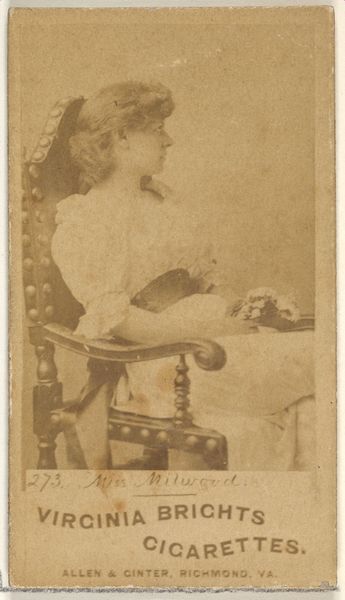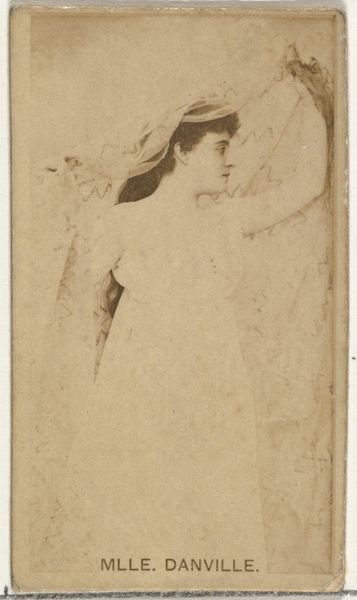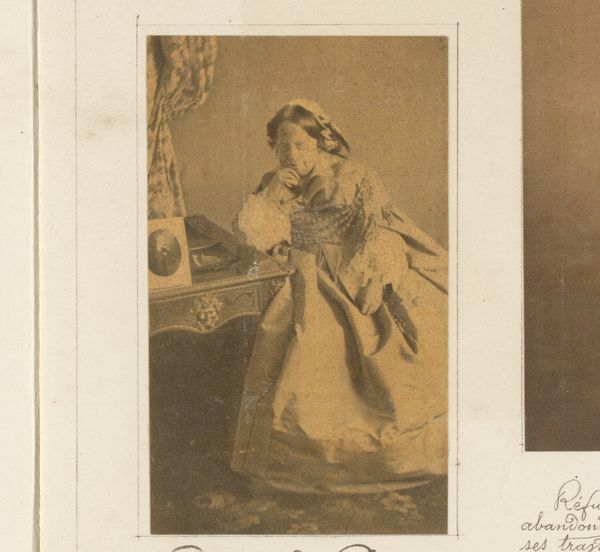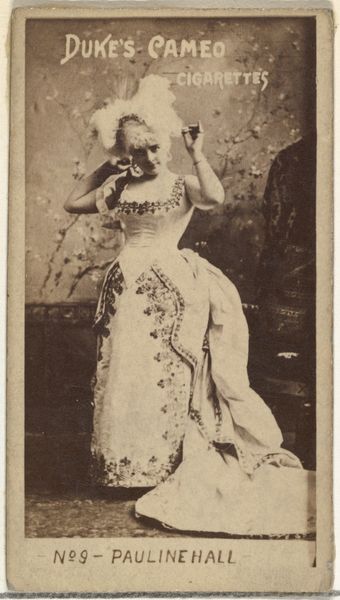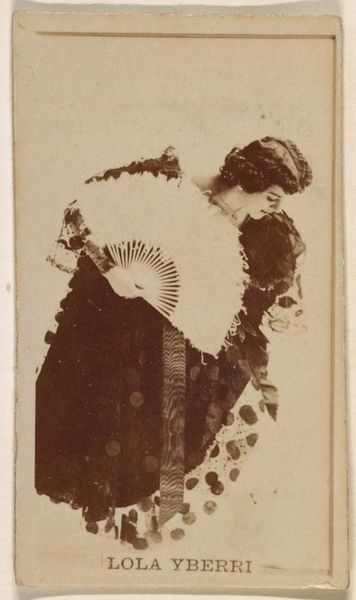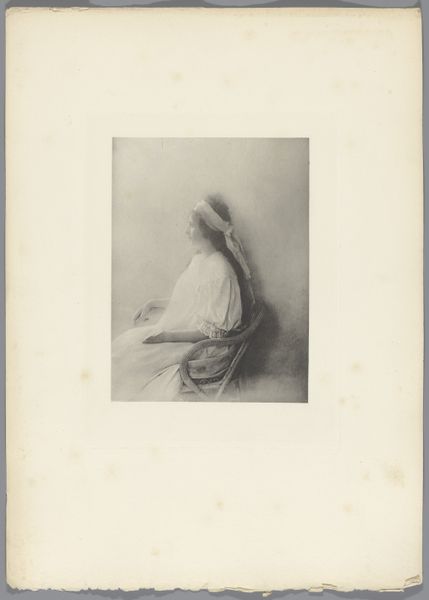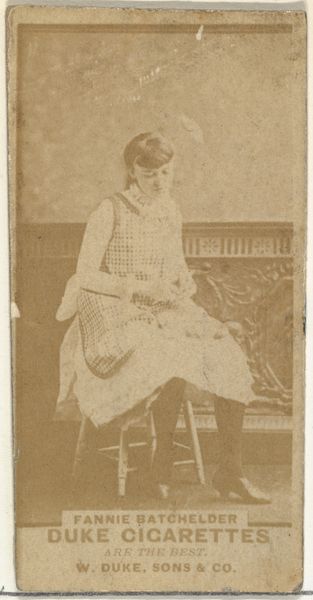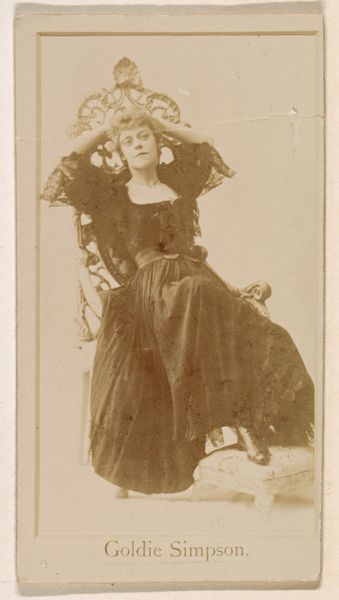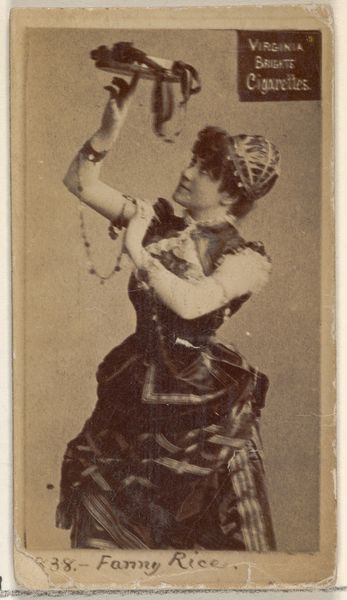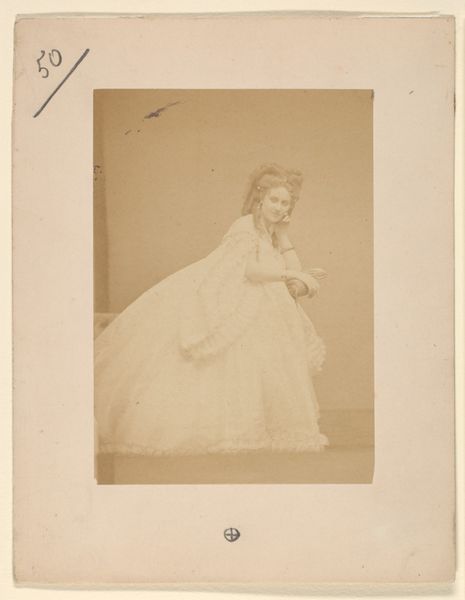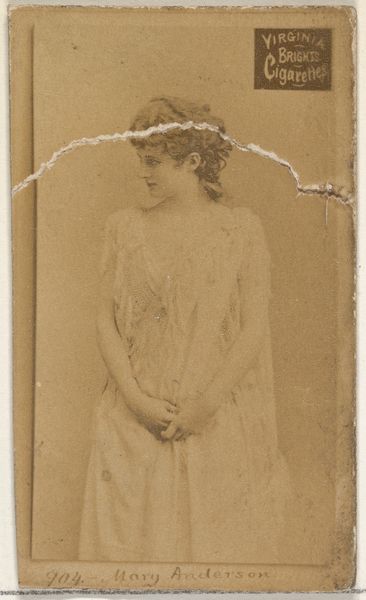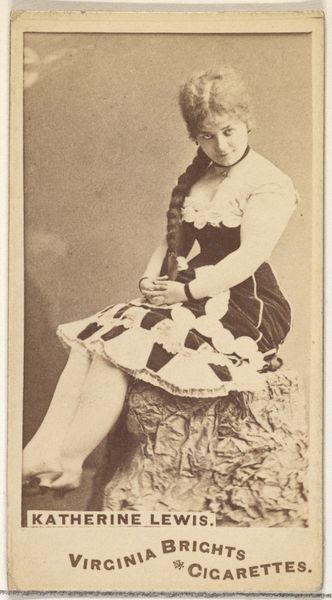
photography, albumen-print
#
portrait
#
photography
#
albumen-print
Dimensions: height 121 mm, width 88 mm
Copyright: Rijks Museum: Open Domain
Editor: This is "Portrait of Eugénie de Montijo," created in 1859, an albumen print photograph currently housed in the Rijksmuseum. I’m immediately struck by how the lighting renders the fabric of her gown—it looks so soft. How do you see this photograph? Curator: For me, it’s compelling to think about this portrait not just as an image, but as an object produced through specific material processes. Albumen prints were fascinating inventions—light-sensitive chemicals painstakingly layered onto paper supports, using egg whites to bind the silver. The photographer, whose name has been lost, was thus constrained and enabled by specific production materials. How does understanding this impact the photograph? Editor: I hadn’t considered the material aspect so deeply, only how this process resulted in that lovely tonality. Were there any implications for the status of the photograph, since so much labor went into it? Curator: Exactly! This process highlights a fascinating tension. On the one hand, photography threatened painting's claim to realistic representation. On the other hand, albumen printing imbued photography with a level of artisanal labor that perhaps elevated its perceived status, attempting to validate the medium as a high art form worthy of wealthy consumers. Who would buy it? Why? Editor: I see your point. It’s as if the effort involved justified the final photographic "product." Curator: And think about the sitter herself: Empress Eugénie. She is not just a regal figure, but a consumer of the technologies and fashions of her time. Consider how this portrait participated in the cultivation and consumption of an imperial image. Editor: I guess thinking about the historical context of labor practices in photographic production helps me move beyond just looking at it and start really understanding its impact. Curator: Precisely. By examining the materials, labor, and consumption surrounding its creation, we gain a much richer understanding of its place in the social fabric of its time.
Comments
No comments
Be the first to comment and join the conversation on the ultimate creative platform.
